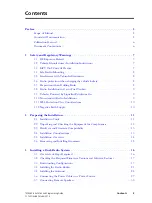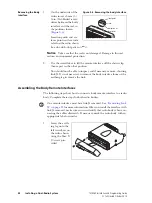
TM8260 Installation and Programming Guide
Safety and Regulatory Warnings
9
© Tait Limited
October 2014
1.8
Radio Installation in Gas or Fuel Tankers
Special conditions must be observed when installing a radio on gas and fuel
tankers. Consult your radio provider or Tait-accredited service center for
more details.
1.9
Vehicles Powered by Liquefied Petroleum Gas
Warning
Radio installation in vehicles powered by LPG (liq-
uefied petroleum gas) with the LPG container in a sealed-off
space within the interior of the vehicle must conform to the
National Fire Protection Association Standard NFPA 58.
This standard states that the radio equipment installation must
meet the following requirements:
■
The space containing the radio equipment shall be
isolated by a seal from the space containing the LPG
container and its fitting.
■
Outside filling connections shall be used for the LPG
container and its fittings.
■
The LPG container space shall be vented to the outside of
the vehicle.
1.10
Non-standard Radio Installations
The installation U-bracket described in this guide has been designed so that
there is enough airflow around the radio body to provide cooling.
If a non-standard installation method is used, care must be taken that
sufficient heat can be dissipated from the heatsink fins and the ridged bottom
surface of the radio.
For this to be achieved, there must be a gap of more than 3/8 inch (10 mm)
between the bottom surface of the radio chassis and the mounting surface.
This is illustrated in
Figure 1.1
Gap between radio chassis and mounting surface
10 mm (3/8 in.)
mounting surface










































